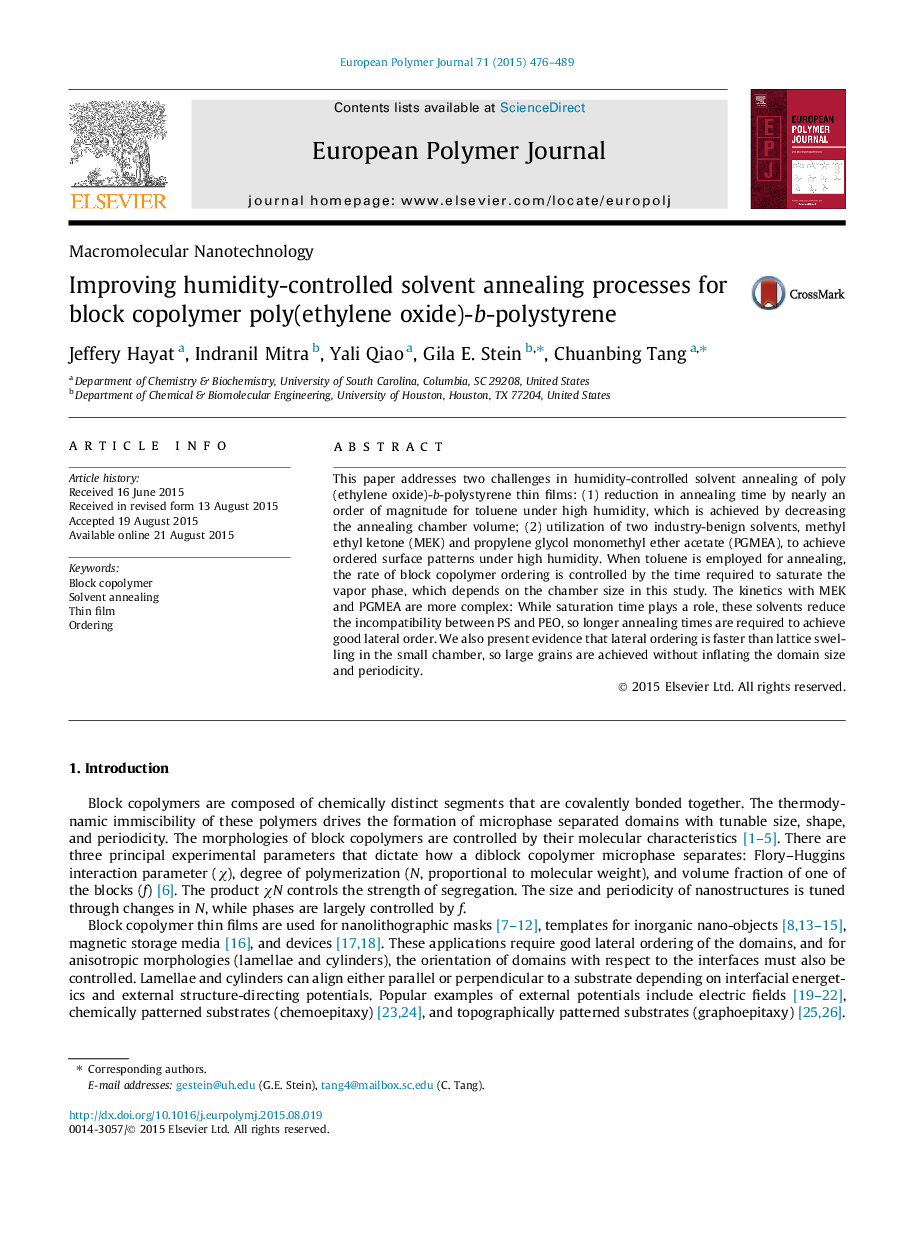| Article ID | Journal | Published Year | Pages | File Type |
|---|---|---|---|---|
| 1394860 | European Polymer Journal | 2015 | 14 Pages |
•Decreasing solvent annealing time by one order of magnitude via reduction of chamber size.•Achieving ordering of block copolymers in thin films using a few industry-friendly solvents.•Carrying out simple numerical simulation to understand the annealing process.
This paper addresses two challenges in humidity-controlled solvent annealing of poly(ethylene oxide)-b-polystyrene thin films: (1) reduction in annealing time by nearly an order of magnitude for toluene under high humidity, which is achieved by decreasing the annealing chamber volume; (2) utilization of two industry-benign solvents, methyl ethyl ketone (MEK) and propylene glycol monomethyl ether acetate (PGMEA), to achieve ordered surface patterns under high humidity. When toluene is employed for annealing, the rate of block copolymer ordering is controlled by the time required to saturate the vapor phase, which depends on the chamber size in this study. The kinetics with MEK and PGMEA are more complex: While saturation time plays a role, these solvents reduce the incompatibility between PS and PEO, so longer annealing times are required to achieve good lateral order. We also present evidence that lateral ordering is faster than lattice swelling in the small chamber, so large grains are achieved without inflating the domain size and periodicity.
Graphical abstractFigure optionsDownload full-size imageDownload as PowerPoint slide
